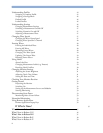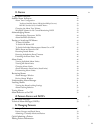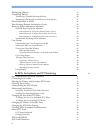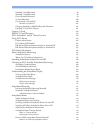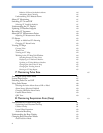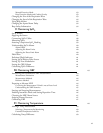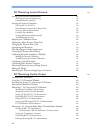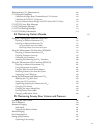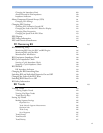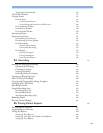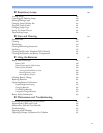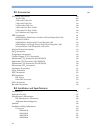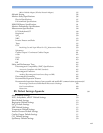
x
Spirometry Values Window 192
Alarms and Alarm Limits 192
Changing the Apnea Alarm Delay 192
Automatic Alarm Suppression 193
Choosing Measured AWV Components 193
Setting the Gas Compensation Mode 193
Changing the Type of Balance Gas 193
Changing the Concentration of Inspired O2 and the Inspired Agents 193
Changing the Temperature of the Inspired Gas 194
16 Monitoring tcGas 195
Identifying tcGas Module Components 195
Setting the tcGas Sensor Temperature 196
Using the tcGas Site Timer 196
Setting the tcGas Site Timer 196
Restarting the tcGas SiteTimer 197
Disabling the tcGas Site Timer 197
Setting the tcGas Barometric Pressure 197
Remembraning the tcGas Transducer 197
New/Dried Out Transducers 198
Storing tcGas Transducers 198
Calibrating the tcGas Transducer 199
Calibration Failure 200
Troubleshooting tcGas Calibration 200
Applying the tcGas Transducer 201
Selecting the tcGas HeatPowerDisplay Mode 202
Zeroing the tcGas Relative Heat Power 202
Finishing tcGas Monitoring 202
TcGas Corrections 202
Temperature Correction for tcpCO
2
202
Metabolism Correction for tcpCO
2
202
17 Monitoring SvO
2
203
Preparing to Monitor SvO
2
204
Carrying out a Pre-insertion Calibration 204
Inserting the Catheter 205
Performing a Light Intensity Calibration 205
Performing In-Vivo Calibration 206
Setting Up the In-Vivo Calibration 206
Making the In-Vivo Calibration 206
Calculating Oxygen Extraction 206
18 Monitoring EEG 207
EEG Monitoring Setup 208
Using the EEG Impedance/Montage Window 208
Choosing an EEG Electrode Montage 209



